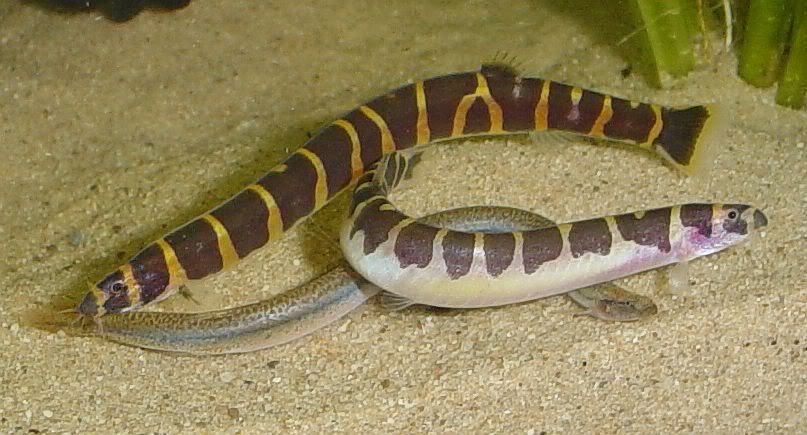mikev wrote:This is probably the most interesting post I've seen here yet, thank you! I take it that MelaFix actually may kill in some cases, noted.
Yes, I've seen MelaFix kill kuhlis. I noticed the pattern change happening on the first one and initially thought he was coming down with some sort of skin infection. In some of his dark areas it look like someone had taken a pencil eraser to him and rubbed off some of the color. The color change was the only thing different, otherwise he was acting normally. So, I opted to treat him in he Q-tank with MelaFix. I figured since MelaFix was supposed to be a relatively benign treatment that it surely wouldn't hurt him. Within minutes of adding the MelaFix he began zooming around the tank. I thought he just needed a little time to get used to it and settle down. After a few hours his activity decreased and he began repeatedly poking his head up out of the water. I watched him for a while thinking he was just upset by the move and being all alone in the Q-tank. He eventually wore himself out and draped himself on the highest thing in the tank he could find to be as close to the surface as possible. He stayed that way for a day or two occasionally poking his head up out of the water. His activity decreased more and more and eventually, by something like the 5th day, he died.
I may not know exactly what they are trying to communicate at the moment, but I will never ignore what my fish try to tell me with their behavior ever again.
When the second kuhli started to change his pattern the exact same way, I didn't do anything and he was fine. His pattern changed pretty dramatically over the period of a a few months, but he was in no way sick. I'm certain if I'd left the other one alone and not subjected him to the MelaFix he would not have died.
I tested the MelaFix with kuhlis in a couple of other instances and when they began to react badly I immedately did a water change and they went back to behavnig normally. None of the other fish in the tank had an adverse reaction that I recall, though the botias may have become a little more restless than usual. The kuhlis behavior change was so dramatic after adding the MelaFix that I was really paying the most attention to them.
mikev wrote:I've had this feeling that what I assumed to be "myersi" might have been actually a mix of two or more closely related species and this is one reason why we see difficulties with breeding. But I was ignorant of P.semiscnicta's existence (Uggh, come on, I thought LOL is a definitive reference to at least the common species.). Needless to say, I don't know exactly what Graeme's photo should mean: are they both semiscnictas? All right, let me read the paper tonight and see what else I can dig up (and how it matches with what I've observed so far).
Very recently the kuhli classifications changed. In the old taxonomy there used to be
P. sumatranus and that's what these spot changing kuhlis looked most like to me from day one. In the new taxonomy
P. sumatranus was reclassified into
P. semicincta, hence my reply that your kuhli is a
semicincta.
mikev wrote:But one immediate question, if you don't mind: what do you mean exactly by their patterns changed: (A) they had different patterns (B) their patterns changed over time.
Their patterns had been stable for a long time and then one day they began to change. I think the whole process took a few months from when I first noticed it until it seemed to stop. But now the surviving one has got such a broken pattern it's hard to tell if he's still changing or not. I'll see if I can dig up some before and after photos of him. It really looked like somone took a pencil eraser to him and rubbed off some of his black areas and then the yellow filled in. Very strange.
mikev wrote:Hmm....0 matches on "semiscnicta" in Google and other searches. Typo? I assume "semicincta" was meant.
Typo...meant to say
P. semicincta Resistance is futile. You will be assimilated.
Resistance is futile. You will be assimilated.


